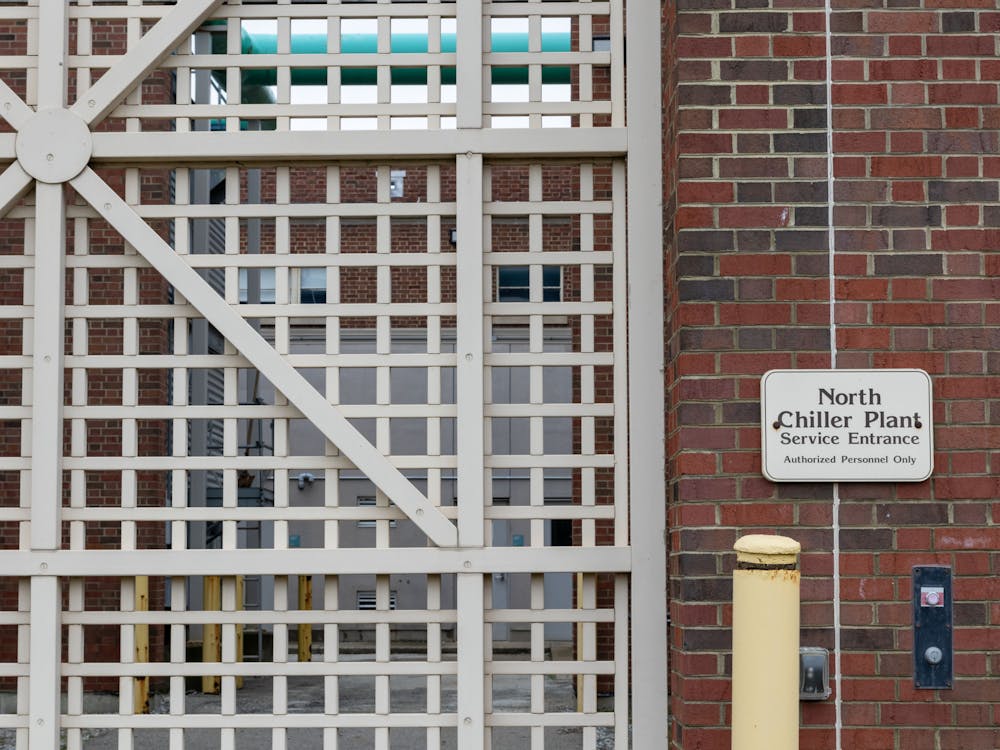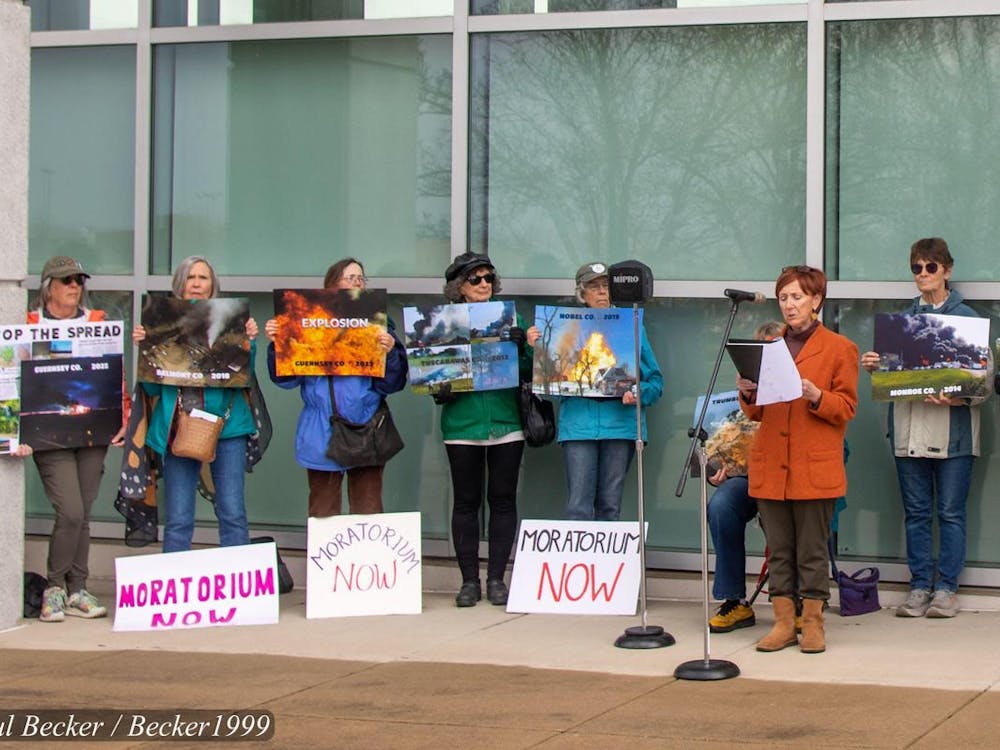Following senior commencement, Miami University plans to break ground for construction, but not for a new academic building or residence hall.
Miami will begin drilling more than 500 wells almost 850 feet into the earth as the university’s next step toward carbon neutrality. The wells will be used for geothermal energy extraction to support the conversion of the North Chiller Plant from fossil-fuel-powered steam systems to a geothermal energy plant. According to the Energy Information Administration, geothermal plants use wells to extract and use the heat from the Earth’s interior to power turbines that generate electricity.
Overseeing this project is Miami’s Director of Sustainability, Olivia Herron.
“Through the President's Climate Leadership Commitment, President Crawford has committed Miami to carbon neutrality by 2040. The biggest source of our emissions, broadly, is energy,” Herron said. “But specifically, we can attribute the biggest single source to heating and cooling our buildings.”
The North Chiller Plant, located between Withrow and McFarland Halls, currently provides heating and cooling through steam systems powered by natural gas, a fossil fuel. Although cleaner than conventional fossil fuels such as coal and oil, natural gas is non-renewable, and unintended leaks or flaring can harm the environment.

The geothermal wells will be dug under the front lawn of Millett Hall instead of the Millett parking lot.
“We have transitioned to natural gas, which is obviously a lot cleaner. But still, we know that it's not efficient to send something really hot through 14 miles of underground line. You're just always going to have heat loss,” Herron said. “... This transition to geothermal is essential to achieving our carbon neutrality targets and will just improve the energy efficiency of all of the buildings it starts.”
The soon-to-be North Geothermal Plant will provide clean heating and cooling to many North campus buildings, including Millett Hall and the Student Athlete Development Center. In addition to North Campus buildings being supported by the North Geothermal Plant, Shideler and Bachelor Hall will be transitioned onto Western’s existing geothermal energy plant.
The Oxford campus projects to heat 43 buildings from geothermal by 2026, accounting for 39% of campus buildings and making geothermal the largest energy source by square footage and number of buildings.
Geothermal plants produce and store energy all year round, making them a reliable source for fluctuating weather patterns and changing climates. Don Van Winkle, the associate director of engineering within Miami’s physical facilities department, explains its capacity to balance energy shortages in times of need.
“What the geothermal wellfield will allow us to do is take that energy we're pulling out in an unbalanced situation and store it in the ground,” Van Winkle said. “So if we are in the cooling season, we've got to take a bunch of heat out of spaces. And we always have someplace to put heat, there's always domestic hot water going on, no matter what time of year.”
Enjoy what you're reading?
Signup for our newsletter
Van Winkle explained that the current steam system is a balancing act of energy use, and with geothermal the ground can be used as an underground battery to store unused energy.
“There is always use for some of the heat, but it could be out of balance. We can use the new geothermal wells to send that heat into the ground, and then it's available for us to use in the winter when we are unbalanced the other way.”
The original project outline for digging these geothermal wells planned on tearing up the Millett parking lot, but discussions in the fall 2023 semester led to a decision not to drill the wells underneath the parking lot. Herron said the wells will be dug under the grass in front of Millett instead.
The energy efficiency, low cost and storage abilities of geothermal energy make it an enticing source of energy for college campuses. With its growing popularity, Miami has run into issues finding contractors to begin construction.
“Cost is going crazy with everything right now, but there's also a pretty high demand for transitioning to geothermal, especially amongst college campuses,” Van Winkle said. “Contractors, they're becoming more available but a lot of them are busy. There's a lot of people doing this work. It's hard to get good competitive pricing and construction in general right now.”
Once the plant is in operation, the university expects costs to go down from removing cooling towers that currently serve the chiller plant, which require excessive chemicals and water for steam production.
The transition to geothermal is one step closer to Miami’s goal of carbon neutrality, and places Miami as an exemplary institution in the race to decarbonization. From 2008-2022 the university reduced their energy-based carbon emissions by 57% and saved $95 million from utility usage. Another geothermal plant will push Miami to wider dependency on geothermal energy and a subsequent reduction in emissions.
“It's also exciting because the goal is essentially for eventually all buildings to be tied on to this geothermal system,” said Herron.
Miami’s North Chiller Plant conversion is expected to begin in the summer of 2024 and be in full operation starting the spring of 2026, with time to charge the Earth’s “battery” over the summer months.




